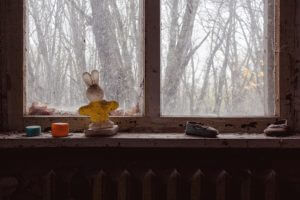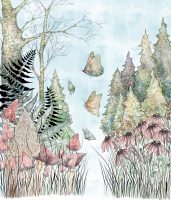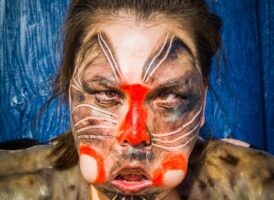Support Hidden Compass
Our articles are crafted by humans (not generative AI). Support Team Human with a contribution!
This story has been republished in the Hidden Compass Legacy Issue in celebration of reaching 100,000 readers. The author will donate her portion of campaign proceeds to earthquake relief efforts in Turkey and Syria.
I’m standing in a totally white world, inhaling the freshest air on Earth. Everything is frozen, including my toes. Only in the curve of the river, where the current is too fast, does the ice give way. Gusts of wind have formed snow dunes all around me. The branches of pine trees hang bent; every now and then, one yields under the weight of the snow, which falls to the ground with a soft thud. I open my mouth to catch snowflakes fluttering from the sky.
Here in this remote Norwegian valley, time seems to have stopped.
I begin walking again through the deep snow. The soft crunch under my thick boots ensures that my presence does not go unnoticed. Thirty pairs of eyes peer at me, ready to anticipate my next move.
It’s mealtime and everyone knows it. As soon as I open the door to the feeding room, 30 sled dogs wake out of their statue postures and start barking and jumping enthusiastically. I know them all by their movements and sounds.
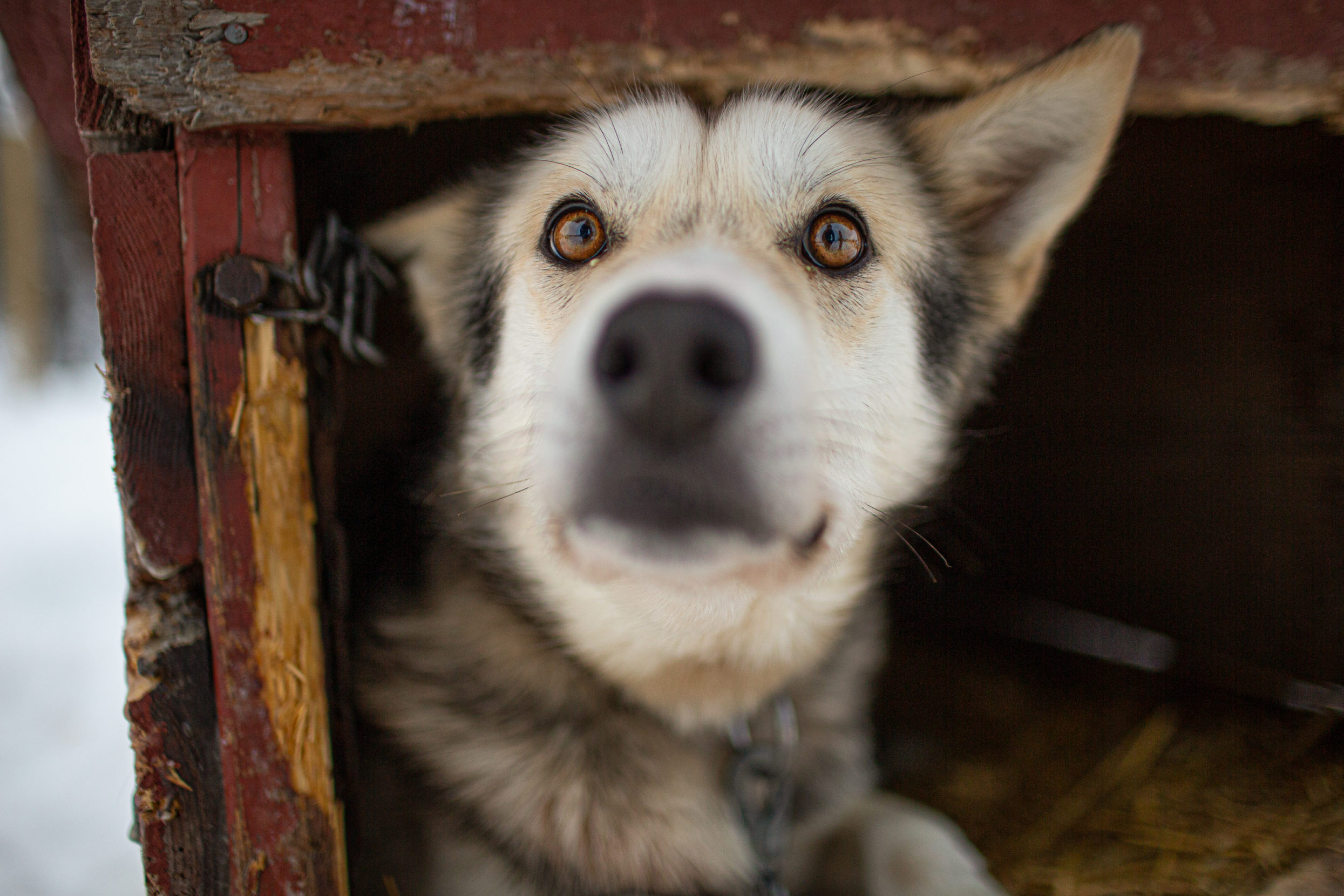
Sled dog Gråbin watches journalist Edmée van Rijn from his doghouse in Tufsingdalen, a valley in eastern Norway. Photo: Edmée van Rijn
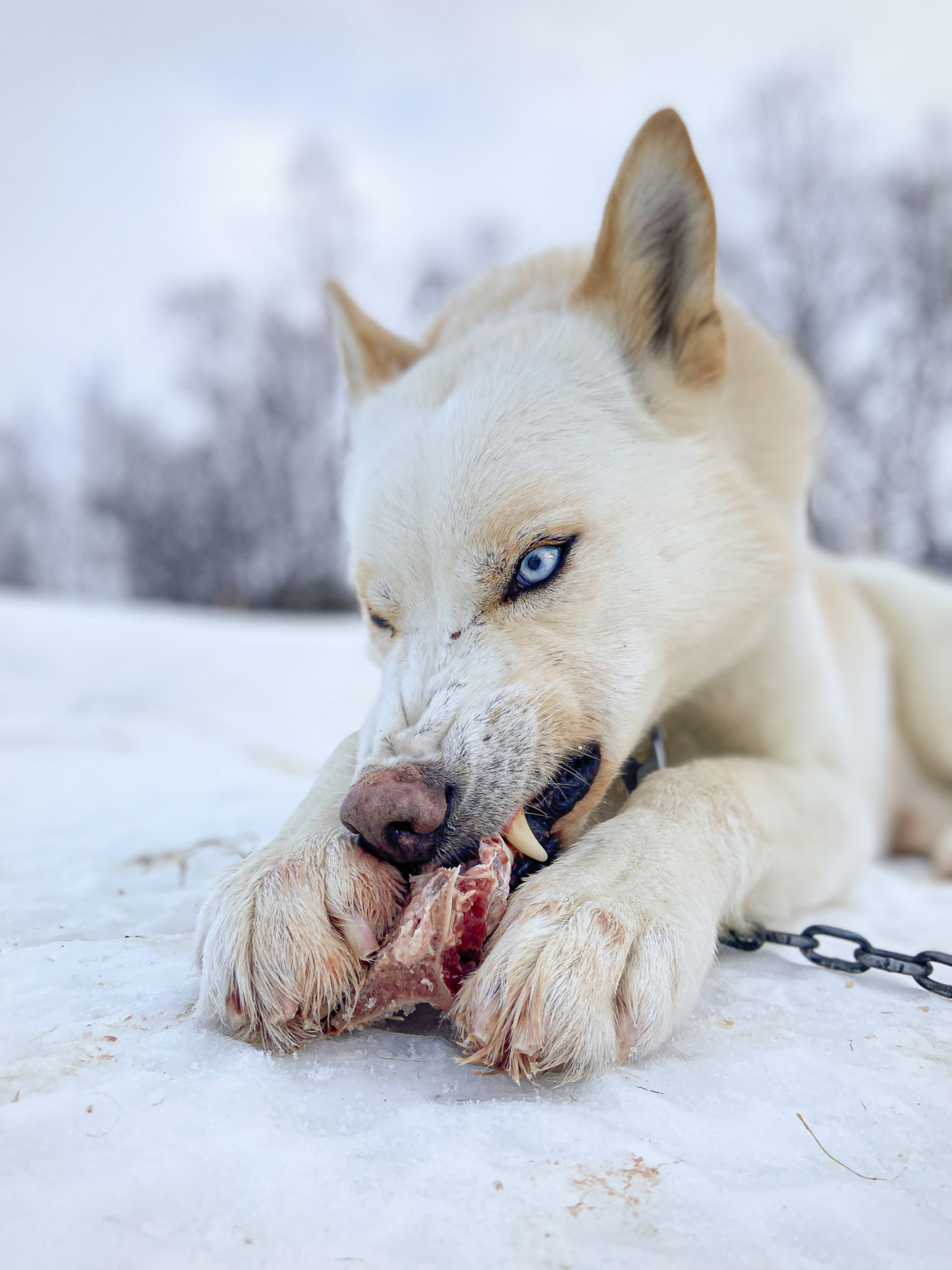
Frost shows off his blue eye — the other is brown — as he gnaws on a bone in the wintry yard of the husky kennel where van Rijn has spent time the past several winters. Photo: Edmée van Rijn
Pipi, a slender black husky with piercing brown eyes, springs from left to right with her bowl in her mouth. She is smaller than the rest — fierce, focused, and determined to perform at her best. A lead dog, she is not fond of unnecessary interaction with other dogs.
Perhaps we get along so well because we are so alike.
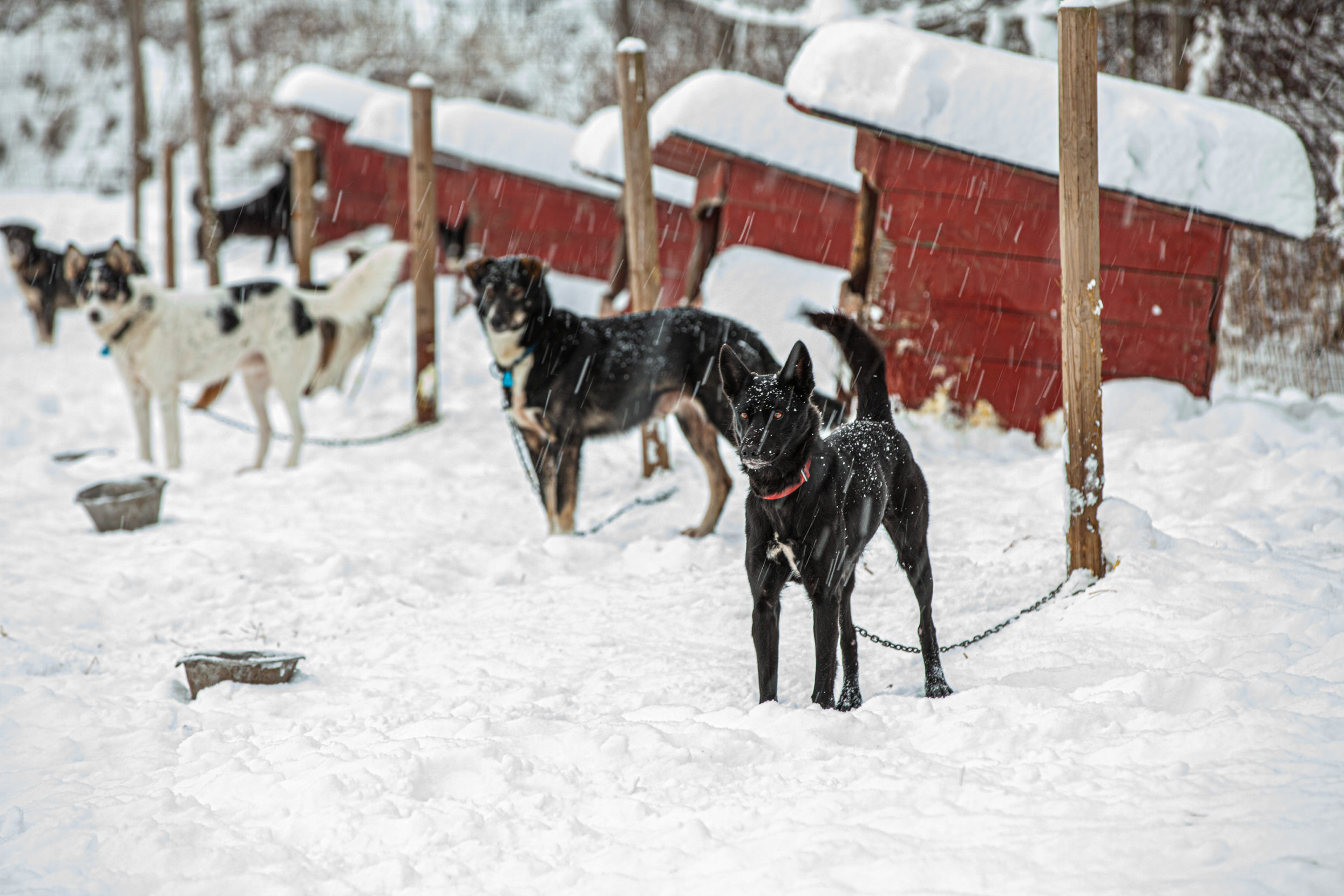
Pipi (foreground) waits attentively outside her doghouse. A natural leader, she took an immediate liking to van Rijn. Photo: Edmée van Rijn
~~
Thousands of miles south, where the air is hot and oppressive, my hours are punctuated by the muezzin’s call to prayer resounding through the mosque speakers. Here, I inhabit a life as different as I can fathom.
For the past seven years I have worked as a producer and camerawoman in the Middle East, often covering breaking news in conflict zones.
Many days, I pull out a heavy blue vest, lift it over my head, and laboriously slide it on, fastening the Velcro and placing the snaps in the right place. My shirt, long-sleeved to protect my skin, quickly becomes soaked with sweat. The vest limits my mobility but hopefully will protect my vital organs. Its weight is nothing, though, compared to the intensity of the violence I encounter.
In my work, death is a recurrent subject.
One morning, I enter a small, concrete family home in Duma, a Palestinian village in the occupied West Bank. A fire has blackened the room. I cover my nose and mouth with my scarf to mask the penetrating smell of burned plastic, metal, and everything else the blaze consumed.
Among the few remains are the metal springs of the bed. Two children from the neighborhood examine family photos that have survived. The assembled members of the press, including me, quickly try to capture the moment.
Baby Ali was only 18 months old when Israeli settlers threw a Molotov cocktail through his bedroom window, causing an instant inferno that burned him alive. Per Islamic customs, the dead are buried as soon as possible, often the same day. Men from near and far gather in and around the village mosque to pay their last respects during the midday prayer. Women grieve together at home.
My presence, as a foreign journalist, is allowed. I push through the mass of exuberant men who shout to God for relief. I need to get an image of Ali, wrapped in a Palestinian flag, being carried to the graveyard in the middle of the village.
Loose, dry sand blows up between the graves as the crowd enters the fenced cemetery. The scorching sun makes everything clammy; by the time the corpse is laid down in the dry earth, I can hardly hold onto my camera. As fast as the graveyard had been filled with hundreds of people, the earth covers the tiny body, and the crowd disperses.
I became a journalist because I wanted to give a voice to people who have been wronged, to expose crimes against humanity and other atrocities, and to help uncover the truth. It’s important to me to show the human life behind every story, so that people are more than statistics. In the face of such trauma, feeling helpless is unavoidable, though I try not to become numb to people’s pain.
Feeling weak, I walk over to the shade of tall, thin coniferous trees on the graveyard’s perimeter. Hours have passed since I last ate or drank anything. Tears well up in my eyes, but I hold them back. Instead, I make an expensive call to family, thousands of miles away.
Less than 24 hours later, I rush to another funeral after a 17-year-old boy protesting Ali’s death is shot dead by the Israeli army.
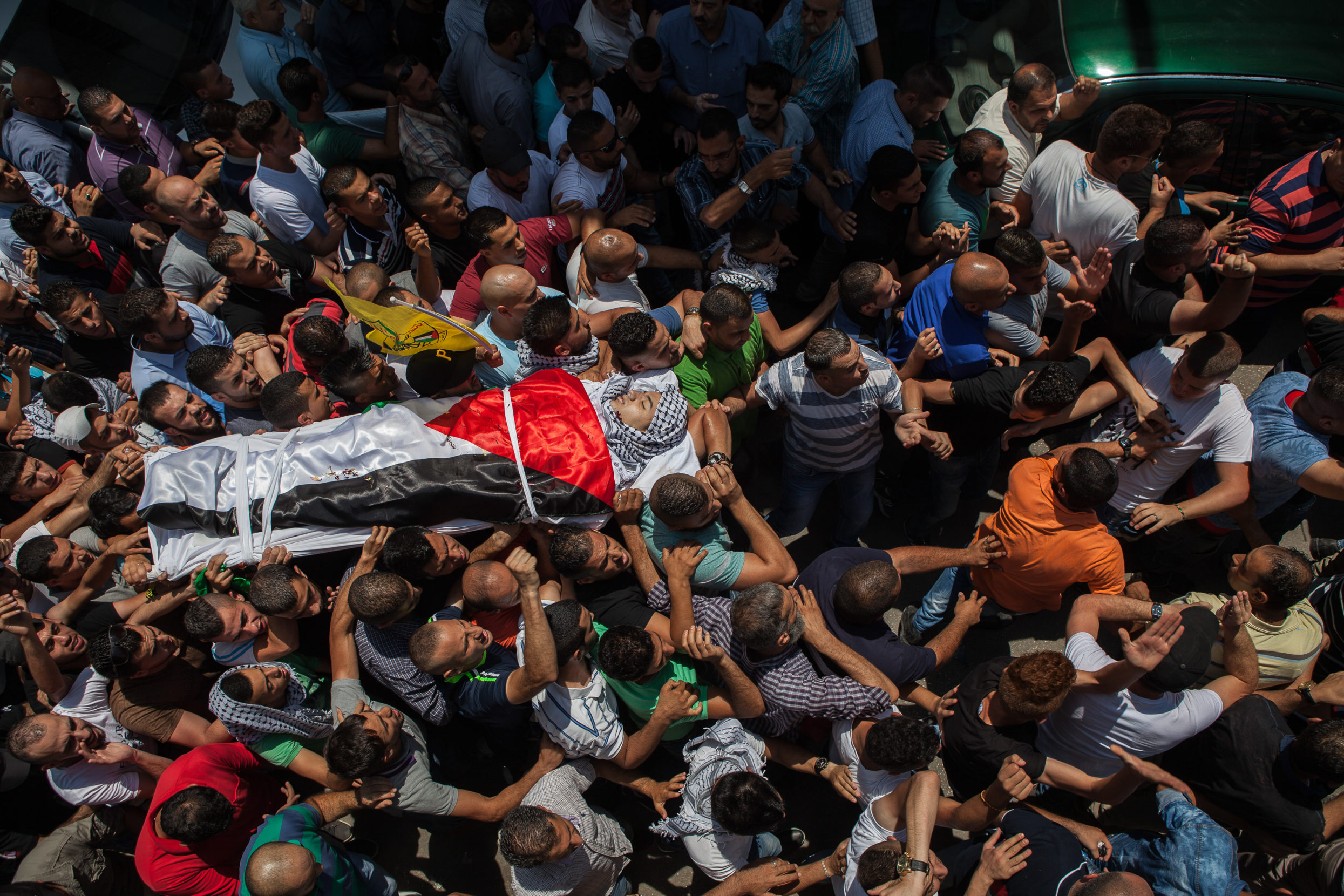
In August 2015, van Rijn found herself covering back-to-back tragedies: the death of an infant when Israeli settlers started a fire in his home, and the subsequent death of a 17-year-old shot at a refugee camp while protesting the first child’s death. Here, the body of the latter is wrapped in a Palestinian flag as a funeral procession carries him. Photo: Edmée van Rijn
~~
As the puppy charged into the back of my legs, my fleet flipped into the air. I landed, hard, on the back of my head, suffering a concussion.
I lived in Ramallah, in the occupied West Bank, then. Months earlier, friends had called about a husky puppy that had been attacked by her own family and was badly injured. I didn’t hesitate for a moment and rescued the injured husky, naming her Didi after a song by the Moroccan singer Cheb Khaled.
I have always loved all living creatures. As a kid, my favorite activity was walking the neighbors’ dogs every afternoon after school. For a while, I wanted to become a veterinarian.
Our first day together, Didi was quite a different creature from the ball of energy that would later knock me off my feet. She shivered from shock as I cleaned her wounds in the bathtub and administered her antibiotic shots. Somehow, she survived. She was just as I had imagined my perfect dog would be: with one blue eye and one brown eye, funny and hyperactive. She loved the sun.
A husky in the Middle East always attracted a lot of attention — too much, as it turned out.
The main chorus of her namesake song, translated from Algerian Arabic, goes: “Take, take the beauty away.” So maybe it was destiny that, after a year and a half together, my Didi was stolen. I never saw her again.
Considering my dogless future in a valley between hills covered with olive trees, I became determined to make a long-held dream come true — to go dogsledding.
~~
On an early morning in Norway, I follow a hallway full of mushing gear to a door. I open it and gag at the pungency of the warm room that awaits. Pulling out a concrete mixer, I set to work blending thawed meat, fish oil, and vitamins.
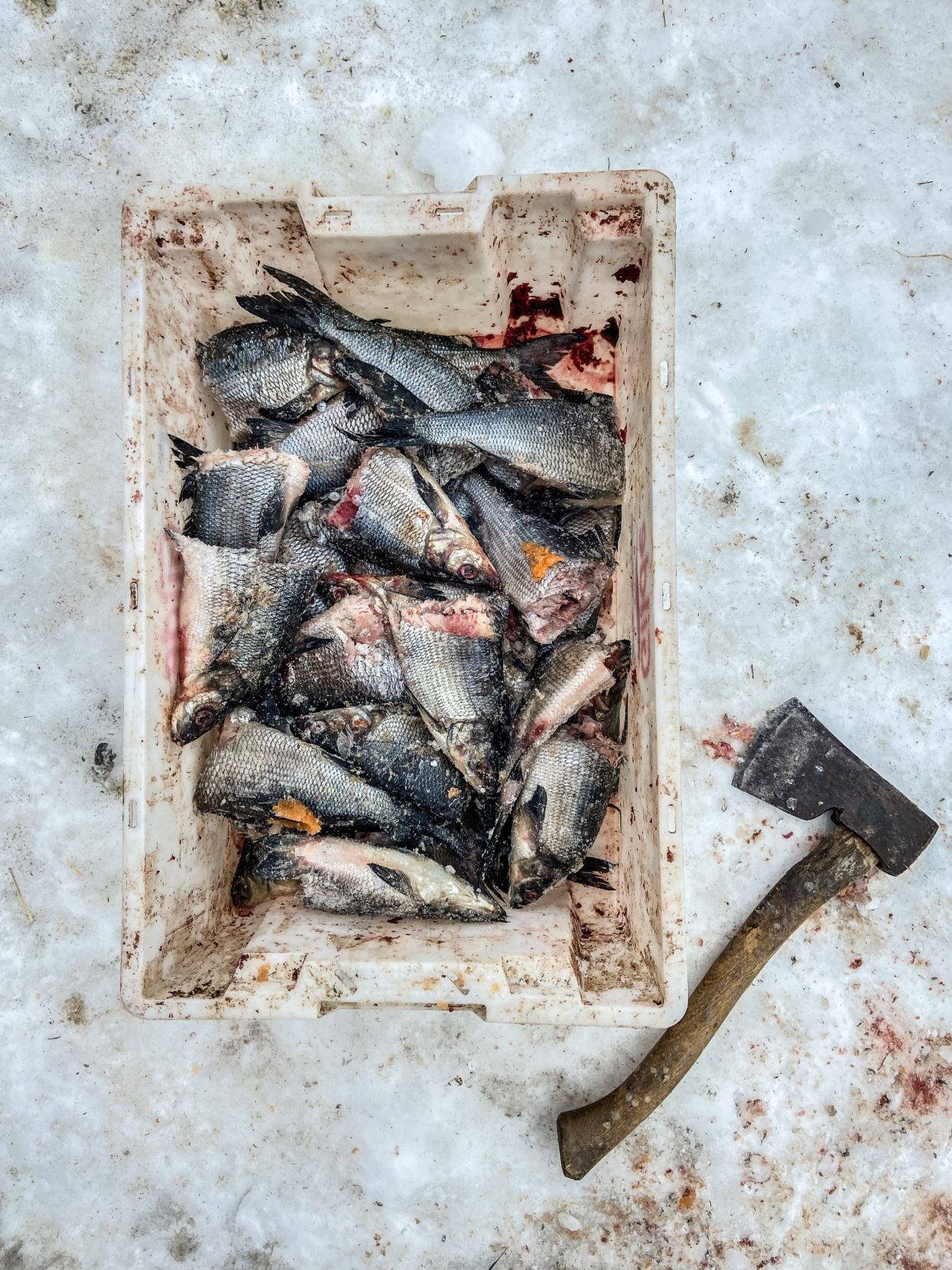
Sled dogs require plenty of fuel, but whether it’s a mealtime mix of meat and fish oil, or an aquatic snack of frozen fish, feeding the dogs can be a pungent experience. These fish were caught in the local river in the autumn and frozen for a winter treat. Photo: Edmée van Rijn
Soon, the smell no longer phases me. I grow accustomed to it the way I have with all the other dog smells here.
After losing Didi, I managed to secure an invitation to volunteer as a handler at a dog kennel in Norway, owned by Stein Håvard Fjestad. A big, proud Norwegian man in his 60s, with a white beard and hair, Fjestad has battered hands from his years growing onions in the summer and dogsledding in the winter. A legendary musher with 50 years’ experience, he became the first European to participate in the Iditarod in 1977.
Fjestad’s approach for me and the other handlers is to learn things the hard way.
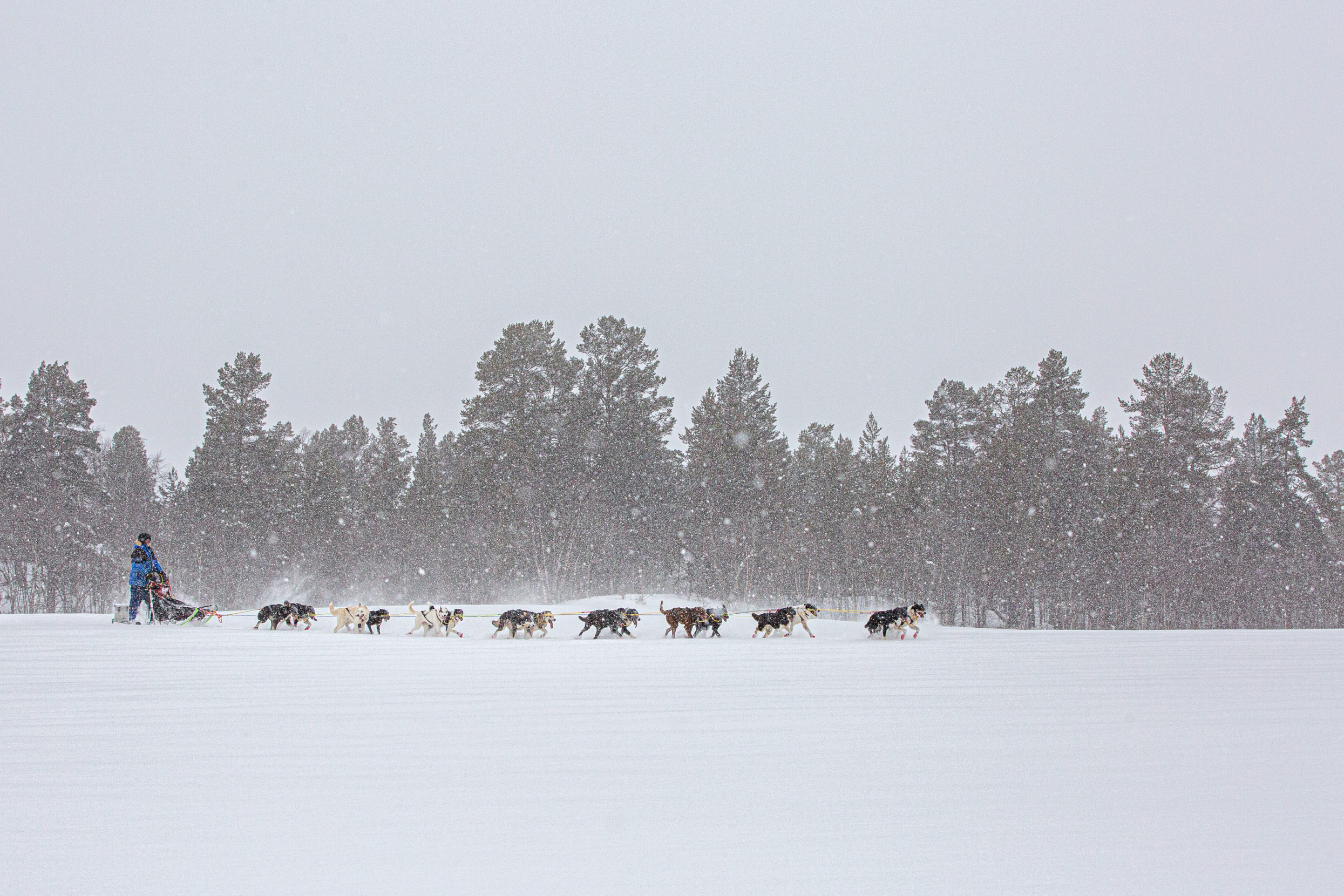
When Stein Håvard Fjestad invited van Rijn to volunteer with the dogs, she jumped at the chance to learn from a musher with half a century of experience. Here, Fjestad leaves the kennels to train with a 16-dog team. Photo: Edmée van Rijn
~~
Only the chirps of a bird break the heavy silence. I separate myself from the group I am with — to find the right frame to capture the exploded buildings all around me, but also to record the auditory void.
I’m in Eastern Ghouta, outside Damascus, after regime forces took over the suburb during Syria’s civil war. Destruction envelops me. As I walk through the bombarded streets, it is hard to imagine how anyone could have made it out alive.
I became a journalist because I wanted to give a voice to people who have been wronged, to expose crimes against humanity and other atrocities, and to help uncover the truth.
In this area, the fighting has stopped. But the havoc renders me speechless. I take note of a washing machine sticking out of the rubble, a broken pot on the ground, a ripped piece of fabric stuck between concrete blocks. I have seen so much destruction in so many places, but each conflict manages to leave its own mark.
I step over the rubble and try to imagine how life here might have looked before the war, while also contemplating how people endured it.
A few blocks farther, life resumes. People walk and cycle in the street; some stop and ask me where I am from. Children play soccer in the damaged yard of what once was a school. On the other side of the street, a bicycle maker repairs one bike after the other. For civilians, cycling has become the only mode of transportation.
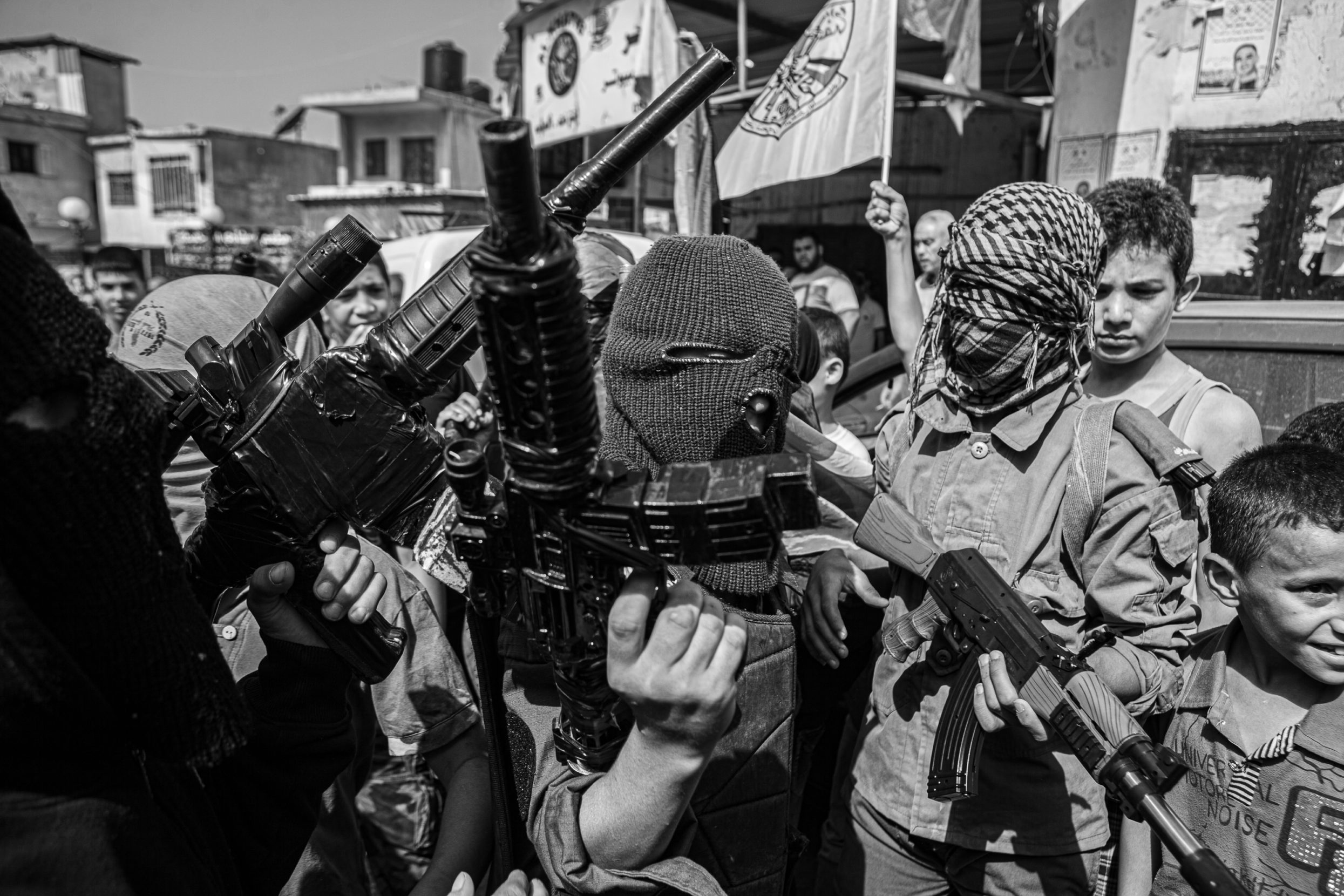
Journalist van Rijn frequently encounters the aftershocks of violence — whether bombarded streets or this jarring scene of Palestinian children playing war with toy weapons in a West Bank refugee camp in 2015. Photo: Edmée van Rijn
My own freedom of movement weighs heavily on this day, as it often does when I’m in the field. My work is difficult, but after a certain point I return to my peaceful home, a luxury and privilege I try not to take for granted. Hundreds of times I have been asked, “Can you please take me back with you?”
~~
I’m sledding on a frozen lake when a dune of snow, sloped 45 degrees, appears in front of me. We need to cross, so I tighten my grip on the bar of the sled.
The first dogs make it over okay; then the rest of the team does, too. But I lose my balance and the sled flips sideways. With my hands still attached to the bar of the sled, I slide on my belly over the ice. The dogs, who don’t know a command to stop, are dragging me.
I need all my strength to hold on.
“Never lose the team,” a voice in my head says, repeating the No. 1 rule I have learned from Fjestad, the dogs’ owner.
Finally, I meet another patch of snow on the ice and manage to throw out my anchor. As the heavy metal hook drags in the snow, the team comes to a halt. I crawl back up again, flipping the sled upright, and then put my weight on the manual brake made of metal pins. After prying the anchor back out of the snow, I lift my foot.
With great eagerness, the dogs take off again. Onward we go, into the wilderness.
~~
Screaming sirens blare as an ambulance races towards the emergency entry of the hospital. A kid, shot in the chest with live ammunition, gets rushed into the emergency room. He doesn’t survive.
In my work, death is a recurrent subject.
~~
Wide awake in bed in the middle of the night, I hear F-16s approach. I am in Gaza and a small, dark, roaring sound becomes higher, sharper, and more intense the closer it gets.
I hold my breath so the only thing I can hear is my own heartbeat, my ears focused on that sound only. Seconds don’t seem to be ticking away.
Here in this remote Norwegian valley, time seems to have stopped.
I hear the jets fly over, and I wait — until, finally, bombs explode some kilometers away.
Only when I hear the distinctive sound of the fighter jets fade away — and when the humming sound of drones hovering high in the sky is all that’s left — am I able to fall asleep again.
~~
In Norway, I reach a T-junction. The dogs ignore my command of taking the left turn. We stand still for at least 15 minutes to see who is more stubborn. They are challenging my authority.
Gaining the dogs’ trust consumes my focus. Through training, feeding, and playing, we get to know each other’s personalities — from eager to rebellious, playful to driven. Overcoming obstacles on the trail strengthens our bond.
From the start, though, Pipi always obeys my commands. Seeing her instantly jump to action upon my command feels wonderful. As does watching the rest of the dogs follow.
I discover that, though physically strenuous, dogsledding allows my mind to rest. Being on the sled almost feels like a rite of passage for the soul. It’s exhausting in the best kind of way.
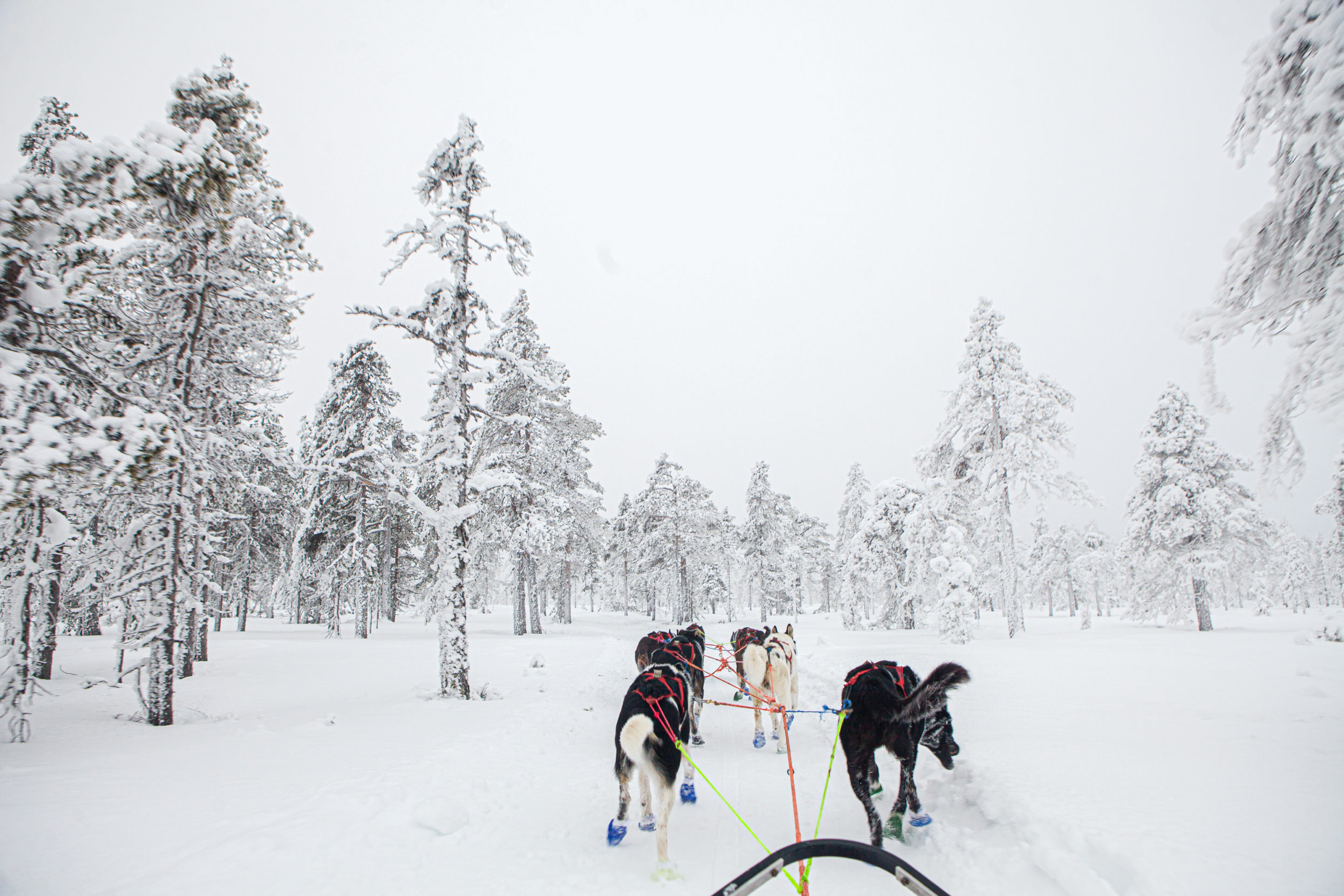
Van Rijn drinks in Norway’s winter wonderland while training her team of dogs — while the huskies sometimes slurp up the snow itself, as the black dog on the right demonstrates here. Photo: Edmée van Rijn
My time in Norway feels like living a dream. This is why, each of the past five winters, I have returned.
It has become my yearly retreat, to leave my chaotic life in the Middle East behind and immerse myself in the tranquility of nature and the tenderness of the dogs. The contrast between those two worlds couldn’t be any bigger; sometimes I go from 20 to minus 20 degrees Celsius in one day.
Sometimes, though, the sand and the snow converge.
~~
The midday reflection off the snow is blinding in its brilliance. Moving on a sled against the wind blows tears down my cheeks, as ice crystals form on my wet eyelashes.
So bright is the sun, I can hardly open my eyes without sunglasses on.
Again, tears run down my cheeks. My eyes burn, my vision blurs. It takes all my self-control to keep from rubbing my eyes. Once again, I was too late putting my gas mask on, leaving me unprotected from the tear gas.
~~
I’m taking a bath, and while water pours into the tub, I hear an alarm going off — an air raid siren? I turn off the faucet to hear better and realize the dogs are howling outside.
~~
“Ma’am, where is the Greek border, and is it open?” A group of refugees asks me, full of hope. I have just returned from the border with Syria, and another misery is unfolding at the other side of Turkey.
Onward we go, into the wilderness.
“The border is that way,” I say, pointing out the direction. Their faces fall when I tell them that the border is closed.
They continue on their way, determined to try anyway.
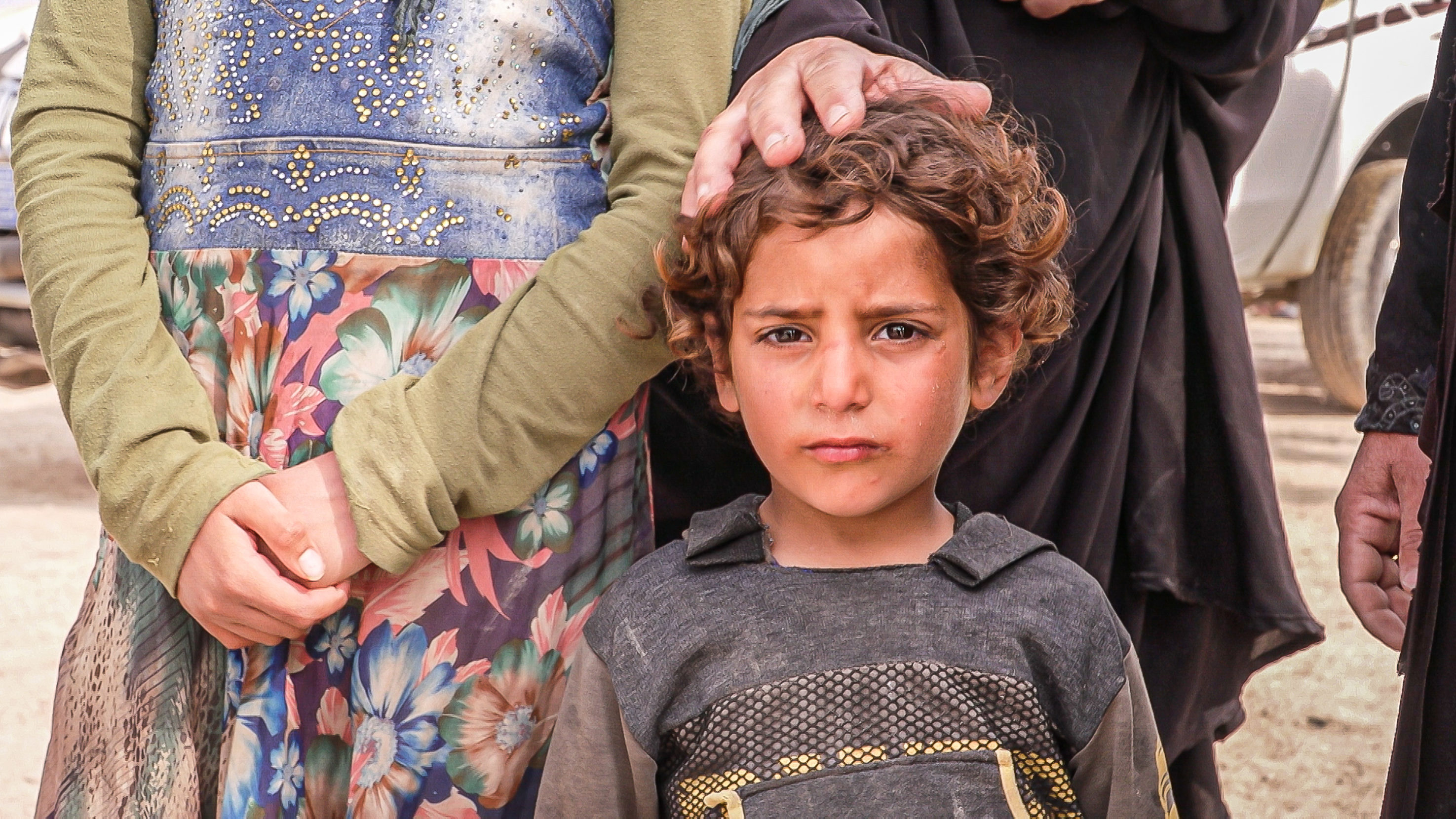
Dedicated to showing the humanity behind every headline, van Rijn captures a 2021 portrait of a young girl in a Syrian refugee camp that holds some 60,000 men, women, and children. Photo: Edmée van Rijn
~~
Floating through the wilderness, with only trees as an audience, I’m intensely concentrated on the dogs running in front of me. I focus on their ears, which hang down and wobble in sync with their trot. United in movement and comradery, the dogs and I face the extreme conditions together. We depend on each other. Within this sacred bond, I reach a nearly hypnotic state.
When I sled high into the mountains, above the tree line, my eyes still fill with tears of astonishment. On a clear day, the only colors are the bright white of the snow and blue of the sky. Here, there is no division between the edge of the world and heaven.

Venturing high into the mountains behind a team of sled dogs gives van Rijn a natural high — and leads the conflict journalist to a rare sense of peace. Photo: Edmée van Rijn
I’m not religious, but the effect is divine. I feel free and alive, and full of gratitude.
The wind coming over the mountaintops blows snow down in a thin layer that almost looks like a flying carpet. Small whirlwinds of snow rapidly gain size and speed in open fields, vanishing as quickly as they came into existence.
~~
The wind is picking up. Loose sand forms small, swirling columns that race over the earth, picking up more sand where possible, becoming stronger. Then the wind dies, and so do the twisters. The midday heat feels unbearable, and so does working. No amount of water seems to quench my thirst.
Loose, dry sand blows up between the graves as the crowd enters the fenced cemetery.
~~
Somebody behind me screams my name. In the pitch black, I turn, but only see the darkness. That’s when I start laughing — it must have been another hallucination. The only sounds here are the dogs trotting and crisp snow passing underneath the slides of the sled. I have been on the sled for seven hours straight.
In this part of Norway, the sun begins to set around 3 p.m., so I spend a lot of time in the dark. When the moon doesn’t reflect on the snow, complete darkness consumes me.
I can see as far as the beam of my headlight, which is just a small bundle of light a few feet in front of my lead dogs. I move forward steadily, at a pace of around 7.5 miles an hour, as the light shines on big snowflakes falling out of the sky. I have to do my best to focus on the dogs through the constant flow of illuminated flakes.
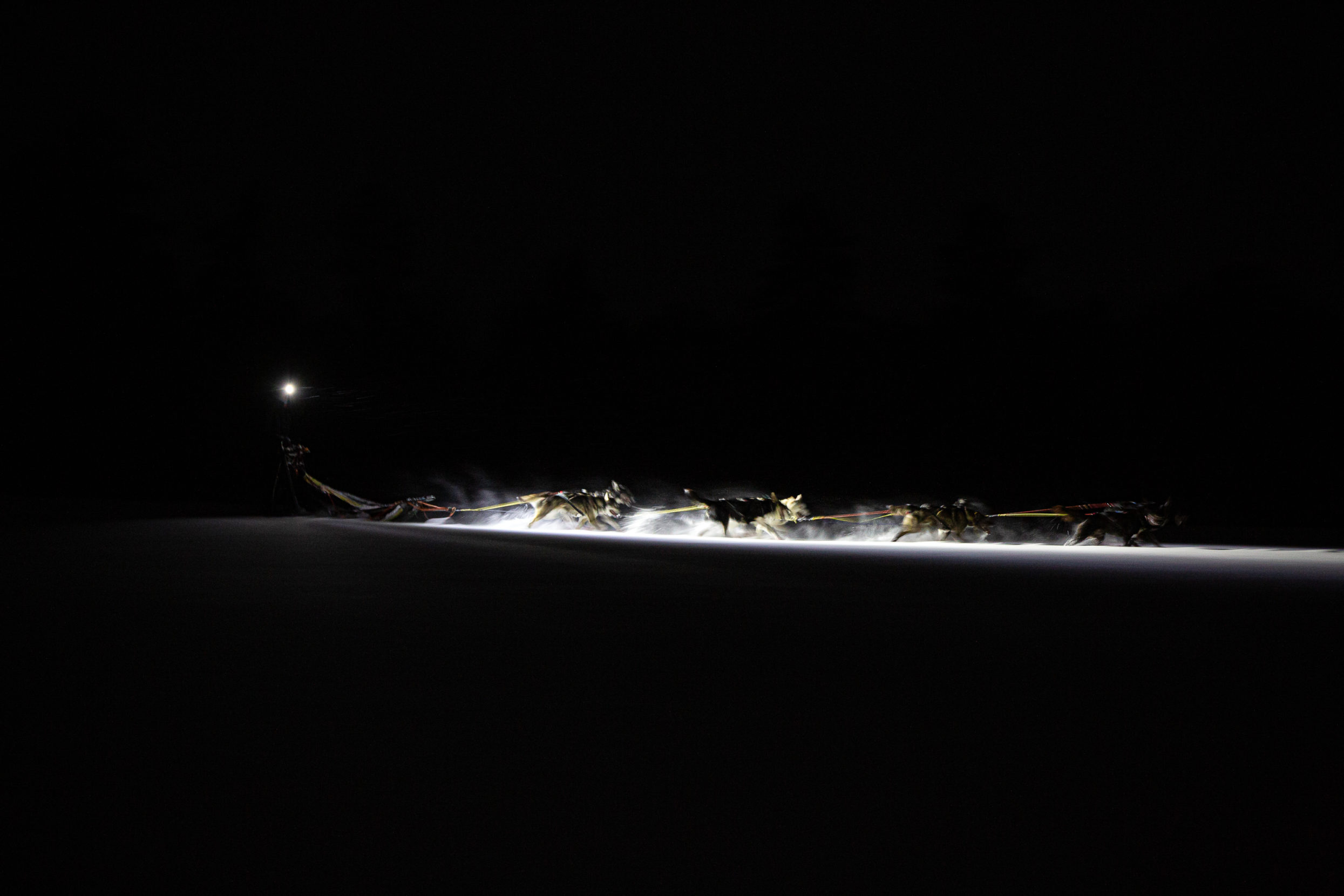
During dogsledding training season, the sun begins to set by midafternoon in the Tufsingdalen valley of eastern Norway, and much of the mushing is done by headlight. Photo: Edmée van Rijn
Mushing for hours on end through the silence and darkness gives me a sensation of traveling into time, space, and my inner self. I have entire conversations with myself — about my life, my future. Hearing a voice calling my name from afar, or the barks of other dogs in the distance, happens frequently, though both sounds are impossible.
To stay warm and keep the blood flowing, I dance on the sled to a song in my head. I look for a clean spot of snow. I kneel down on the sled, stretch out my arm, and scoop some snow straight into my mouth.
From the dogs, I learn to follow my intuition. Held by the beauty and power of nature, I worry less about the past and future. I take each moment as it comes and start to recognize the insignificance of my surroundings.
Whatever happens, I only belong to myself.
~~
Fresh snow camouflages the sledding trails. It is the first time I’m out on my own with a full team of eight dogs. I feel confident yet extremely focused on the dogs as they pull me and the sled forward at a steady pace.
I know where to direct my team, but at a certain point, the trail disappears.
My lead dog, Pipi, confidently runs forward through the dense trees, finding our way with her feet. She jumps a bit to the right to test the snow depth, which helps her localize the trail under a blanket of snow.
It is blue hour — a moment of twilight between sunset and darkness, when everything covered in snow reflects a shade of blue. In these moments, the contrast dissipates. Yet, in that ambiguity, I reach a sense of clarity.
In awe, I succumb to the dogs’ instincts and relax. I don’t know where we are, but not once do I fear we are lost.
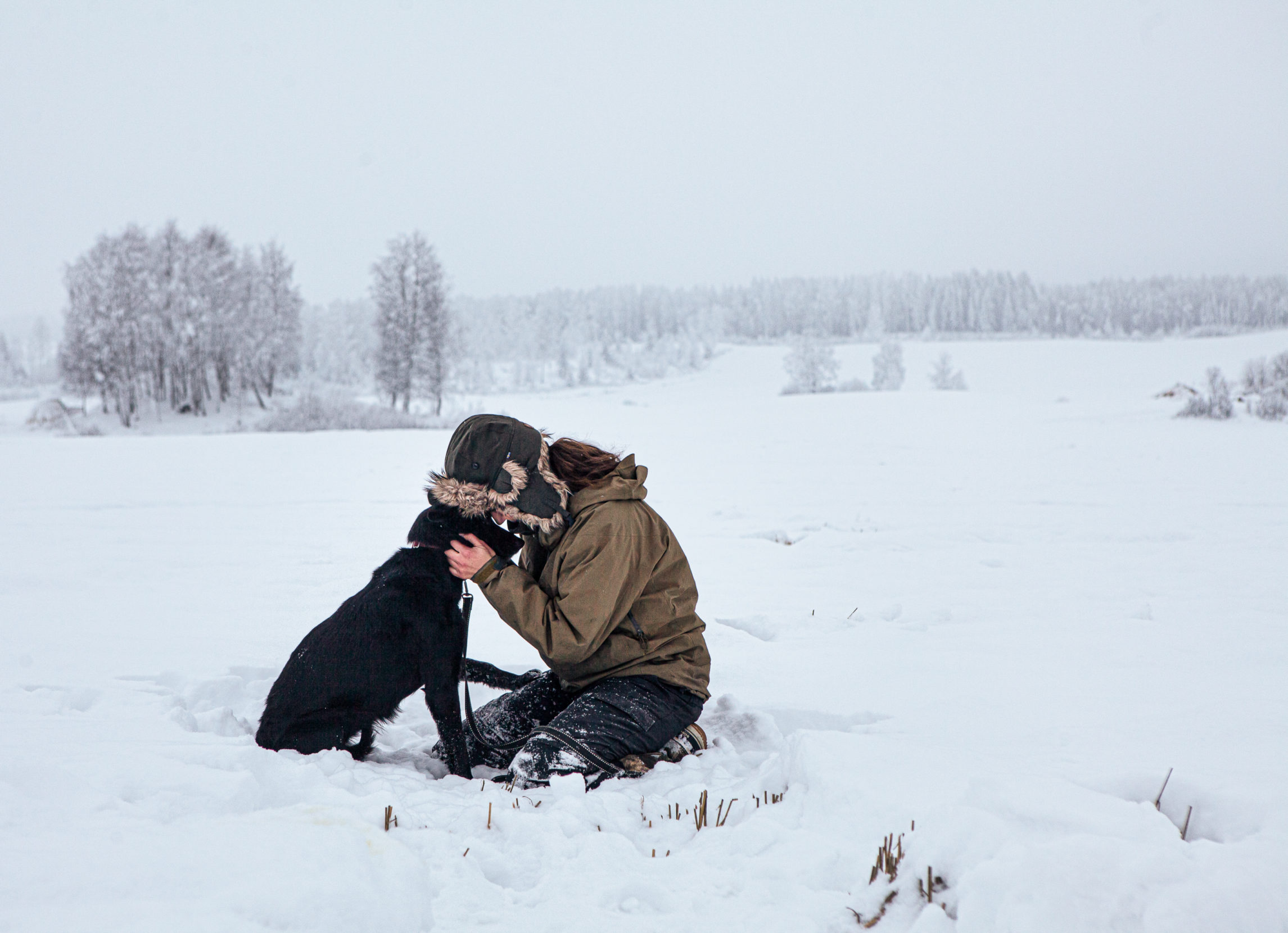
Van Rijn shares a moment with her favorite sled dog, Pipi. Photo: Edmée van Rijn
###
May 2023 Update

Rescue workers dig through the rubble after Turkey’s devastating earthquake. Photo: Edmée van Rijn
Beams of light shatter the dark evening, exposing segments of rubble from what once was a five-story building. The sharp sound of a drill hitting concrete echoes between the debris. A sudden shout for silence, and rescue workers freeze as one shouts into a hole they have been digging, waiting for the sound of survivors. Family members gather in front of the destruction. Giving up on loved ones under the rubble is not an option. The death toll of the February 6th earthquake in Turkey and Syria surpasses 50,000.
When I gaze up past the silhouettes of the trees a spectacular view appears. Thousands of stars shine, the galaxy clearly visible. I’m surrounded by dogs who give me unconditional love, who never ask, just listen to whatever I need to process.
My escapes to mush in Norway have become not only a passion but also a means to maintain my mental well-being — and ability to give my all in my reporting trips. I hope to do this until I move to Norway one day.
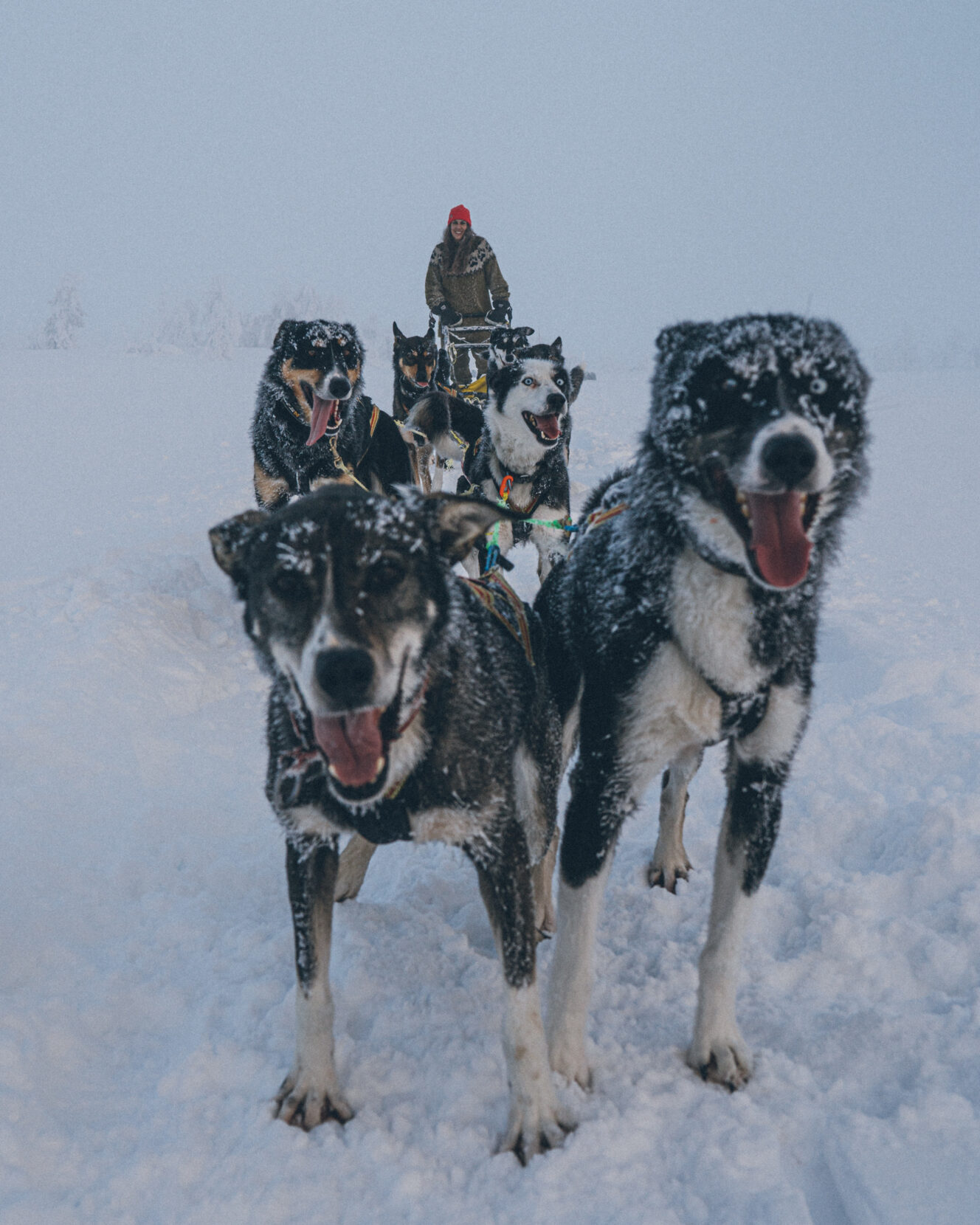
Edmée van Rijn mushes through the Arctic snow pulled by a team of energetic dogs. Photo: Henrik Vikse
Edmée van Rijn
Edmée van Rijn, born and raised in the Netherlands, is an experienced freelance camerawoman, editor, and producer working across the Middle East and beyond.

